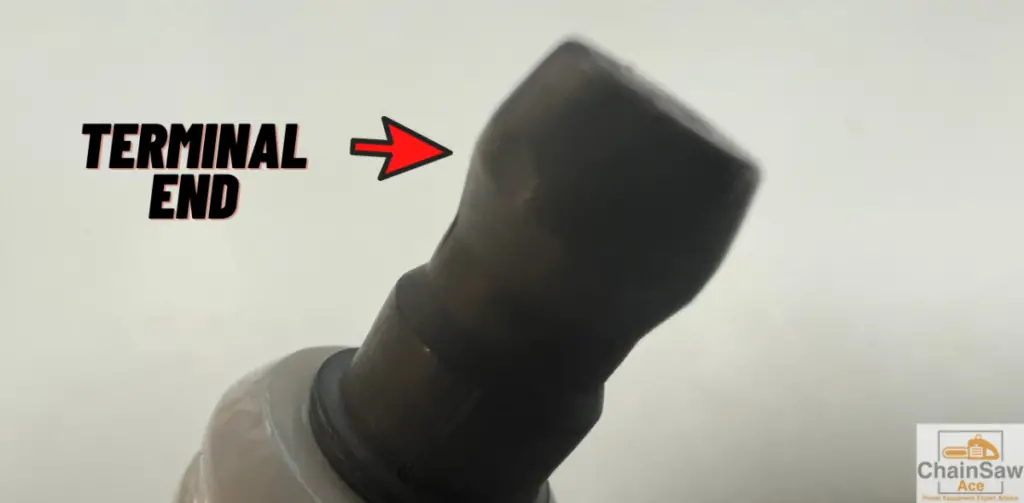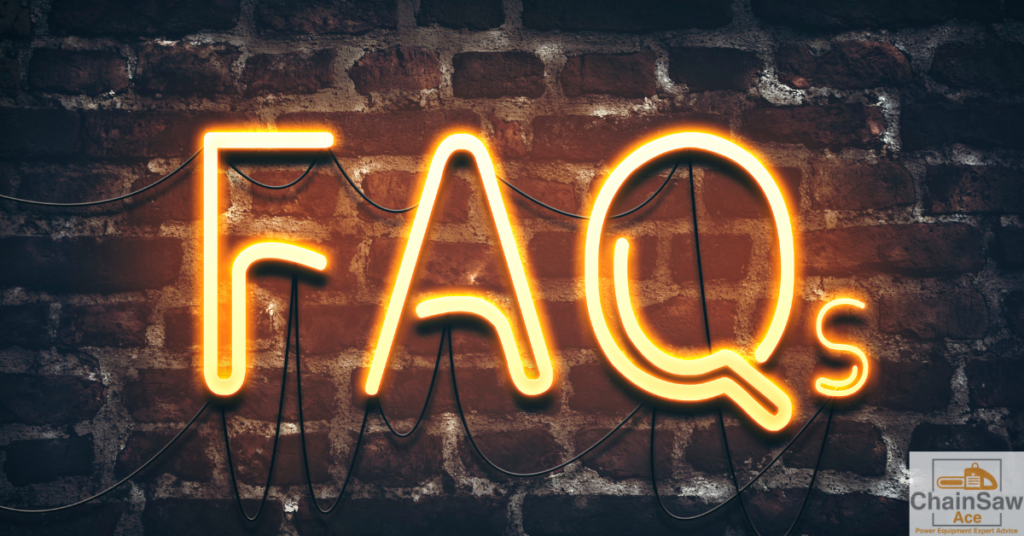
A Stihl chainsaw is a reliable and powerful tool that can make quick work of any woodcutting task. However, like all machines, it requires proper maintenance to ensure optimal performance.
One critical component of your Stihl chainsaw is the spark plug.
In this article, we will discuss the signs of a failing Stihl chainsaw spark plug, reasons for its failure, and how to address the issue.
Signs of a Failing Stihl Chainsaw Spark Plug

A failing spark plug can cause a range of problems, ultimately affecting your chainsaw’s performance. Here are some common signs of a failing Stihl chainsaw spark plug:
Difficulty Starting
One of the first signs of a failing spark plug is difficulty starting the chainsaw. A worn or damaged spark plug may not produce the required spark to ignite the fuel mixture, making the chainsaw hard to start or requiring multiple attempts.
Poor Engine Performance
If your Stihl chainsaw is not performing as well as it should, a failing spark plug might be the culprit. A weak or inconsistent spark can result in poor combustion, leading to decreased power and sluggish engine response.
Increased Fuel Consumption
A failing spark plug can also cause increased fuel consumption. If the spark is weak or intermittent, the fuel mixture may not burn efficiently, leading to higher fuel consumption and decreased performance.
Fouled Spark Plug
A fouled spark plug is one covered in deposits, such as oil, fuel, or carbon. These deposits can hinder the spark plug’s ability to generate a strong spark, resulting in poor engine performance.
Misfiring Engine
A misfiring engine is another sign of a failing spark plug. Misfires occur when the spark plug fails to ignite the fuel mixture in the combustion chamber properly, causing the engine to run unevenly and reducing overall performance.
- Signs of a Failing Stihl Chainsaw Spark Plug
- What is a Spark Plug?
- Role of a Spark Plug in a Chainsaw
- Reasons for Spark Plug Failure
- How to Inspect a Stihl Chainsaw Spark Plug
- How to Replace a Stihl Chainsaw Spark Plug
- Preventive Measures to Prolong Spark Plug Life
- Wrapping Up
- FAQs
- How often should I replace my Stihl chainsaw spark plug?
- Can I clean a fouled spark plug instead of replacing it?
- Is it necessary to use a Stihl-branded spark plug in my chainsaw?
- Do I need a special tool to change the spark plug on my Stihl chainsaw?
- Why is my chainsaw still not starting even after I replaced the spark plug?
What is a Spark Plug?

A spark plug is a small but essential component in the internal combustion engine of your chainsaw. It ignites the fuel-air mixture inside the engine cylinder, creating a controlled explosion that powers the engine.
Role of a Spark Plug in a Chainsaw
In a chainsaw, the spark plug provides the necessary spark to ignite the fuel-air mixture in the combustion chamber. This ignition process generates the power needed for the chainsaw to operate efficiently.
Reasons for Spark Plug Failure

Several factors can contribute to spark plug failure, including:
Incorrect Gap
The gap between the spark plug’s center and ground electrode is critical for generating a strong spark. An incorrect gap can lead to poor combustion and reduced performance.
Carbon Buildup
Carbon buildup on the spark plug can occur due to an overly rich fuel mixture, poor ignition system, or using low-quality fuel. This buildup can hinder the spark plug’s ability to generate a strong spark, leading to poor engine performance.
Worn Electrode
Over time, the electrodes on a spark plug can wear down due to heat, pressure, and constant sparking. A worn electrode can reduce the spark plug’s ability to generate a strong spark, resulting in poor engine performance.
Oil Leakage
Oil leakage into the combustion chamber can cause the spark plug to become fouled with oil, reducing its ability to generate a strong spark. This issue can stem from worn piston rings, valve seals, or a faulty head gasket.
Improper Heat Range
Using a spark plug with the incorrect heat range for your Stihl chainsaw can cause premature failure. The heat range determines how well the spark plug dissipates heat. An improper heat range can lead to overheating or fouling, resulting in poor performance.
How to Inspect a Stihl Chainsaw Spark Plug

To inspect your Stihl chainsaw spark plug:
- Disconnect the spark plug wire and remove the spark plug using a spark plug wrench.
- Examine the spark plug for signs of wear, damage, or fouling.
- Check the electrode gap using a feeler gauge and adjust, if necessary, according to your chainsaw’s specifications.
How to Replace a Stihl Chainsaw Spark Plug
If you determine that your Stihl chainsaw spark plug is faulty or worn out, follow these steps to replace it:
- Purchase a new spark plug compatible with your Stihl chainsaw model.
- Remove the old spark plug, as described in the inspection section above.
- Check and adjust the electrode gap on the new spark plug, if necessary.
- Install the new spark plug using a spark plug wrench, ensuring it is seated correctly.
- Reconnect the spark plug wire.
Preventive Measures to Prolong Spark Plug Life
To prolong the life of your Stihl chainsaw spark plug, consider the following preventive measures:
- Use high-quality fuel and oil in your chainsaw.
- Inspect and clean your spark plug regularly.
- Replace the spark plug according to the manufacturer’s recommended maintenance schedule.
- Ensure proper engine tuning to avoid overly rich fuel mixtures.
Wrapping Up
A failing spark plug can significantly impact your Stihl chainsaw’s performance. By being aware of the signs of a failing spark plug and understanding the reasons behind its failure, you can take the necessary steps to maintain or replace the spark plug as needed.
Regular maintenance and preventive measures can help prolong the life of your spark plug and keep your chainsaw running smoothly.
Have a safe day, and happy cutting out there.
Steven R
FAQs

How often should I replace my Stihl chainsaw spark plug?
It’s recommended to replace the spark plug according to the manufacturer’s maintenance schedule, usually, every 100 hours of operation or annually, whichever comes first. However, this can vary depending on your chainsaw model and usage.
Can I clean a fouled spark plug instead of replacing it?
In some cases, you can clean a fouled spark plug using a wire brush or a special spark plug cleaner. However, if the plug is heavily fouled or damaged, it’s best to replace it with a new one.
Is it necessary to use a Stihl-branded spark plug in my chainsaw?
While Stihl-branded spark plugs are designed to work optimally with your chainsaw, you can use other compatible spark plugs from reputable manufacturers. Ensure the spark plug meets your chainsaw’s specifications.
Do I need a special tool to change the spark plug on my Stihl chainsaw?
You will need a spark plug wrench to remove and install the spark plug. This tool is specifically designed for spark plugs and will ensure proper handling and torque when replacing the plug.
Why is my chainsaw still not starting even after I replaced the spark plug?
If your chainsaw still won’t start after replacing the spark plug, other issues may be causing the problem, such as a clogged fuel filter, a faulty carburetor, or a damaged ignition coil. It’s best to consult your chainsaw’s manual or a professional technician for further troubleshooting.

